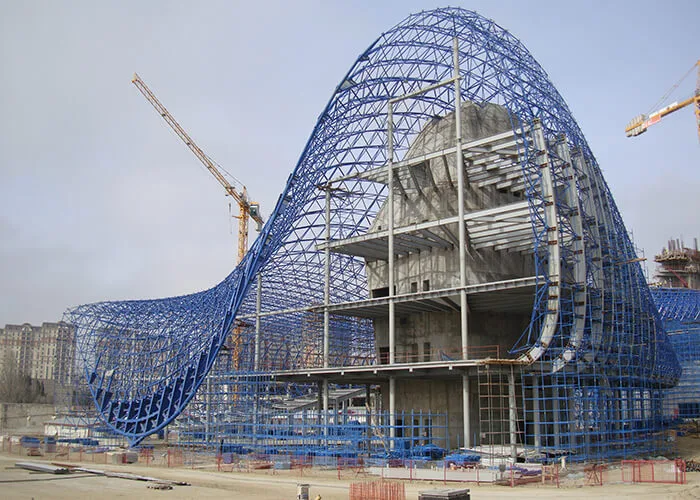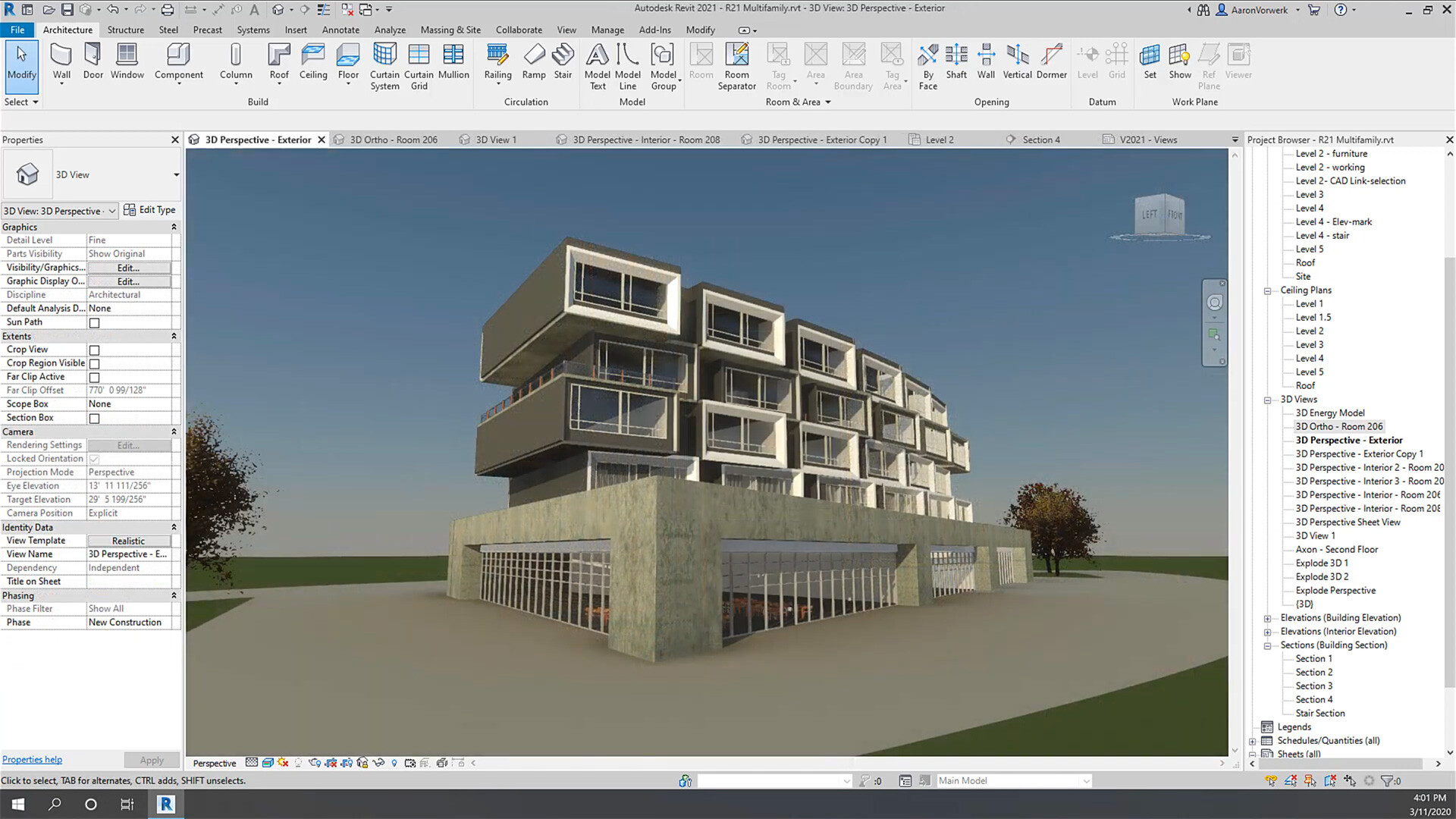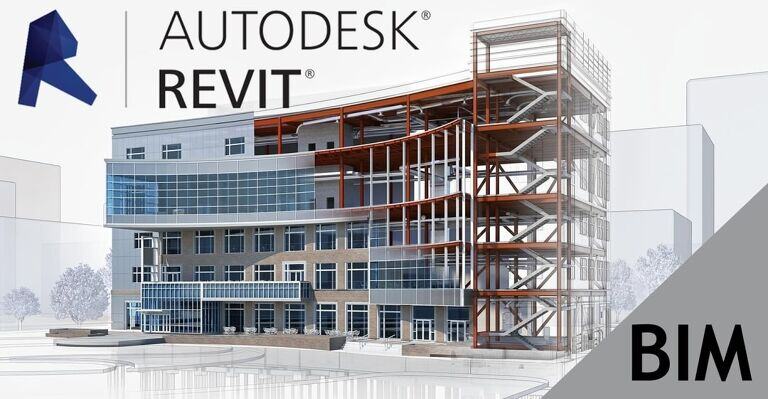Generative Design in Structural Engineering: Uses, Benefits, and the Way Forward
Table of Contents
Generative design in structural engineering is revolutionizing the way buildings and infrastructure are conceptualized and constructed. By harnessing the power of advanced algorithms and computational tools, generative design in structural engineering enables engineers to optimize designs, improve material efficiency, and reduce costs across projects. This technology generates multiple design options based on a variety of input parameters such as environmental factors, material constraints, and budget limits.
By automating the design process and analyzing countless alternatives, generative design enables structural engineers to make informed decisions that would otherwise be impossible through traditional design methods. As the AEC industry embraces generative design in structural engineering, engineers can create sustainable, efficient, and highly innovative solutions. These advancements not only benefit the building process but also offer structural engineers the opportunity to expand their skill sets and stay at the forefront of an evolving profession, paving the way for significant career growth in the field.
Who is a Structural Engineer?
Structural engineers apply principles of physics and mathematics to understand how different materials behave under stress, determining the optimal design for structures such as bridges, skyscrapers, malls, and institutions. By considering factors such as gravity, wind, earthquakes, and other external forces, structural engineers ensure that the constructed elements can bear the intended loads while adhering to safety standards and regulations.
Here, technology can play a vital role in helping professionals be accurate with their jobs. It can allow them to derive precise structural documentation and analysis to provide solutions that are correct and future-relevant. New-age tools and processes like generative design, machine learning, and BIM (Building Information Modeling) are leading the way forward in this league.
Also Check out: The Impact of BIM on Civil and Structural Engineering
What is Generative Design?
Generative design is a futuristic technology that leverages algorithms and computational power to explore multiple design possibilities based on a set of parameters and constraints. It involves the use of iterative algorithms to explore a multitude of potential solutions. By feeding in design goals, materials, manufacturing constraints, and other relevant factors, Artificial intelligence (AI) powered software generates a variety of design options. These software produce innovative and efficient solutions that may have been difficult to conceive through manual methods. Some of the most popular and widely used generative design software for structural engineers include Revit, ETABS, Civil 3D, STAAD Pro, and Naviswork.
Why Should Structural Engineers Learn Generative Design?
Upskilling in generative design is a necessity for structural engineers in the contemporary day and age. Practising in the field otherwise is like drafting manually even when you have software for easing your work. Let’s have a look at how structural engineering professionals can benefit by learning generative design.
1. Improve Design and Build Efficiency
Using generative design in structural engineering optimises design processes. Through iterative algorithms, the software explores countless design iterations based on specified parameters. This leads to solutions that are efficient in terms of material usage, spatial optimisation, structural stability, and construction process. It eventually helps in effective resource allocation throughout the project.
2. Time and Cost Savings
The iterative and automated nature of generative design expedites the design phase, allowing structural engineers to produce and evaluate numerous solutions in a fraction of the time it would take through traditional methods. This enhances productivity and frees up more time for professionals to pursue tasks that require human intervention. This also translates into cost savings, making projects more economically viable.
3. Enhanced Team Collaboration
Structural engineers can seamlessly communicate with architects, contractors, and other stakeholders involved in a project using the collaborative wireframe of BIM software. The parametric modelling feature allows real-time editing and updation of 3D models, helping all team members to stay informed about alterations in the project. Such an interdisciplinary approach fosters holistic solutions to make the overall project a success.
4. Future-Proofing Your Career
Learning generative design positions structural engineers at the forefront of new-age technological advancements in the field. As the integration of artificial intelligence and Computational Design becomes increasingly prevalent, civil engineers equipped with generative design skills are better poised to navigate and leverage these emerging trends.
Also Check out: 10 Best Structural Design And Analysis Software
5. Career Growth Opportunities
Mastering generative design tools opens doors to advanced career opportunities. As companies increasingly adopt this innovative approach, professionals with generative design expertise are in high demand. Engineers who embrace this skill set position themselves for leadership roles and greater responsibilities within the industry.
6. Better Pay Scale
The demand for generative design skills often translates into better compensation packages. Employers recognise the value of engineers who can leverage cutting-edge technologies to streamline processes and deliver superior results. Consequently, engineers proficient in generative design often enjoy a more competitive and rewarding salary scale.
Applications of Generative Design in Structural Engineering
The use of generative design in structural engineering is growing at an exponential rate. Design and construction firms across the globe such as Zaha Hadid Architects, Foster + Partners, Arup, and AECOM are using generative design tools for their projects. So, let’s have a look at how the adoption of generative design is aiding Architecture, Engineering, and Construction (AEC) firms to execute their projects more efficiently.
1. Efficient Structural Systems
The use of generative design allows structural engineers to optimise structural geometry by considering parameters such as load-bearing requirements, material properties, and environmental factors. Computational algorithms generate numerous design iterations, exploring different forms to achieve the most efficient and structurally sound solutions. It streamlines material usage and results in lighter and more sustainable structures.
2. Minimising Carbon Footprint
Using generative design software, structural engineers can input green building design criteria to explore sustainable materials and construction techniques. Professionals can also evaluate the structural performance and energy efficiency of building components using relevant tools. This can ensure that structures are optimised for functional utility and align with environmentally conscious practices.
3. Adaptive and Resilient Designs
Environmental considerations and natural occurrences such as weather, climate change, earthquakes, and other calamities can impact the stability of structures. With the use of algorithms, structural engineers can simulate scenarios such as lateral loads to study their impact on the proposed design. This enables the identification of design solutions that stand the test of time.
4. Architectural Innovation
Generative design liberates structural engineers from the constraints of conventional design tools. It allows them to explore complex and intricate geometries with the click of a few buttons, or rather, the input of a few parameters. This enables the creation of unique and thoughtful structural marvels that look good and function to their optimal level.
5. Rapid Prototyping
The iterative nature of generative design in structural engineering facilitates modularity. Using software, structural engineers can assess multiple design options for efficacy and durability within a shorter time. This agility in design allows for smart exploration of innumerable possibilities, resulting in faster project timelines and reduced time spent on manual iterations.
5 Generative Design Software Useful for Structural Engineers
The introduction of various software in the structural engineering field is making it feasible for professionals to incorporate generative design in everyday tasks. Mentioned below are the most sought-after generative design software for structural engineers that you can explore.
1. Revit with Dynamo
Revit integrated with Dynamo is a powerful tool revolutionising the design process for structural engineers. The seamless interaction between Revit and Dynamo empowers engineers to automate repetitive tasks, perform complex parametric modelling, and conduct advanced analysis. With Dynamo's extensive library of design algorithms and scripting capabilities, engineers can explore numerous design iterations, optimise structural performance, and efficiently manage project data.
2. Navisworks
Navisworks is an important software for structural engineers involved in large-scale complex building projects. Its robust clash detection and coordination features enable engineers to identify and resolve clashes early in the design phase. This minimises errors and enhances project coordination throughout its lifecycle. Further, Navisworks facilitates comprehensive project visualisation, enabling structural engineers to evaluate execution issues, analyse spatial relationships, and effectively communicate the design intent across multidisciplinary teams.
3. ETABS (Extended Three-Dimensional Analysis of Building Systems)
ETABS stands as a premier choice for structural analysis and design. It offers engineers a comprehensive set of tools for modelling, analysing, and optimising building structures. With its advanced finite element analysis capabilities, ETABS enables professionals to simulate real-world behaviour, evaluate structural performance under various loading conditions, and ensure code compliance. Furthermore, ETABS's intuitive user interface and parametric modelling capabilities empower engineers to explore design alternatives efficiently and make informed decisions throughout the design process.
Also Check out: Discover the Top 5 Structural Engineering Trends
4. STAAD Pro
STAAD Pro is a widely recognised structural analysis and design software. It provides engineers with powerful analytical tools to tackle complex structural challenges. From linear and nonlinear analysis to dynamic analysis and code-based design, STAAD Pro offers a versatile platform for engineers to analyse and optimise structural systems. Its seamless integration with other design software platforms enhances interoperability and facilitates efficient data exchange, enabling engineers to streamline workflows and accelerate project delivery.
5. Civil 3D
Autodesks's Civil 3D is a generative design that supports structural engineering workflows, particularly in infrastructure projects. With its robust structural design and documentation tools, Civil 3D empowers engineers to create detailed building models, analyse earthwork quantities, and generate construction documentation. Further, Civil 3D's interoperability with other Autodesk software platforms facilitates seamless data exchange and collaboration across disciplines, fostering integrated project delivery and enhancing project outcomes.
6. Rhino with Grasshopper
Rhino with Grasshopper is a world-recognised parametric design tool. It offers structural engineers a flexible platform to explore generative design concepts and realise complex geometries. Through Grasshopper's visual programming interface, engineers can create parametric models, conduct performance-based design analysis, and explore design variations iteratively. Rhino's extensive plugin ecosystem provides engineers with access to advanced analysis and optimisation tools for structural design exploration and innovation.
How Can Structural Engineers Learn Generative Design?
Structural engineers aiming to learn generative design can explore a plethora of courses both offline and online. They can compare the program on a variety of parameters such as course curriculum, time commitment, fees, flexibility, faculty cohort, teaching pattern, and placement opportunities.
Offline learning can be done through post-graduation university courses, workshops, seminars, and community engagements. However, these ways of learning are more traditional and offer limited scope for exposure to global practices. Additionally, they require the participant to be physically present in the classroom for lectures, which is difficult for working professionals. The cost of university programs is usually more than online courses, making it a demanding investment of both time and money for the learners.
Conversely, online learning offers the advantage of flexibility and accessibility. Engineers can engage with video tutorials, webinars, and structured courses on platforms such as Novatr, Coursera, and LinkedIn Learning. The online approach allows for self-paced learning, enabling professionals to navigate through generative design concepts at their convenience. Additionally, these platforms often provide interactive exercises and practical examples, allowing learners to apply theoretical knowledge in projects.
How will Generative Design Shape the Future of Structural Engineering?
As technology continues to advance, we can anticipate that generative design will reinvent the face of work in the AEC industry. Predictions indicate that generative design algorithms will evolve to a point where they will optimise structural elements and seamlessly integrate with real-time data, environmental considerations, and evolving construction methodologies.
Furthermore, the democratisation of generative design tools is expected to gather momentum. This will allow a broader spectrum of professionals, irrespective of the scale of their practice to explore new-age technology in their work. This could lead to a surge in creativity, with a diverse array of voices contributing to the evolution of structural design. We might witness the rise of customisable generative design frameworks tailored to specific industries, allowing for a more nuanced and efficient design process.
In Conclusion
The applications of generative design in structural engineering are only expected to grow in future. Therefore, professionals who upskill in generative design will be better equipped to handle complex design and construction issues. It can open the doors to more lucrative career opportunities for structural engineers and make them more desirable for working on projects of international significance.
If you are keen to learn about generative design structural engineering, then you must explore the BIM Professional Course for Civil Engineers by Novatr. The program offers a comprehensive understanding of generative design in the construction and infrastructure development field using BIM technology. It provides insights into 10+ BIM software with industry workflows to prepare learners for real-world challenges. The course is taught by practising professionals who share case studies and live project examples to deliver theoretical concepts with clarity. Participants also get the opportunity to work on ISO-certified capstone projects to hone their knowledge and skills.
Explore the course today!
FAQs
1. What is the principle of generative design?
Generative design uses advanced algorithms to create multiple design alternatives based on specific input parameters and constraints. It works by considering factors such as material properties, load requirements, environmental conditions, and cost limitations. This method enables the system to generate a variety of solutions, ultimately helping engineers select the most efficient, cost-effective, and sustainable design, often providing better results than traditional methods by exploring a broader range of possibilities.
2. How is generative design used in building structures?
In structural engineering, generative design is used to optimize building layouts, improve material efficiency, and enhance the overall performance of structures. By inputting key parameters like structural load, environmental conditions, and budget, engineers can generate multiple design alternatives that meet specific requirements. This process helps identify the most effective solution, reducing material waste, increasing sustainability, and improving construction timelines, while also providing innovative and highly functional building designs that meet the latest industry standards.
3. What are the top generative design software for structural engineers?
Some of the top generative design software for structural engineers include Revit with Dynamo, Navisworks, ETABS, STAAD Pro, and Rhino with Grasshopper. These software solutions offer powerful features for modeling, analysis, and optimization of structural systems. They enable engineers to explore a variety of design possibilities, conduct clash detection, and ensure that every element of the structure meets performance and safety requirements. These tools are essential for engineers looking to apply generative design principles to real-world structural engineering projects, enhancing both design and efficiency.

 Thanks for connecting!
Thanks for connecting!




.png)

-1.png)

.jpg)

